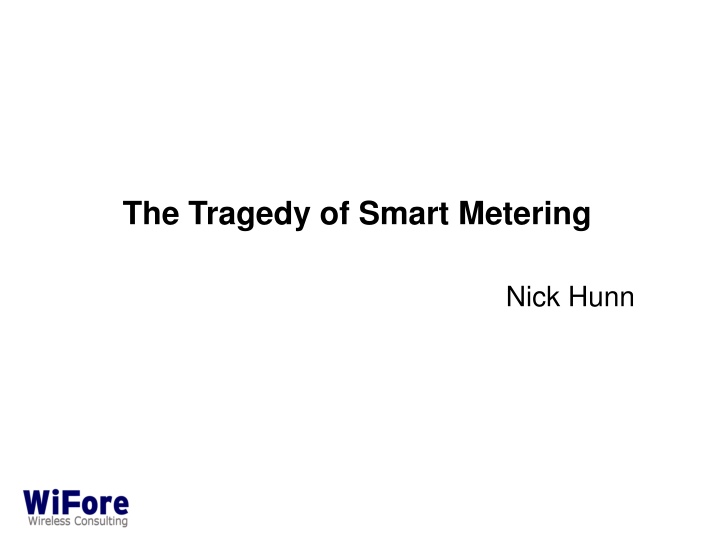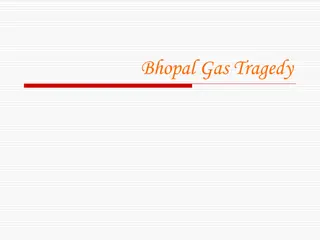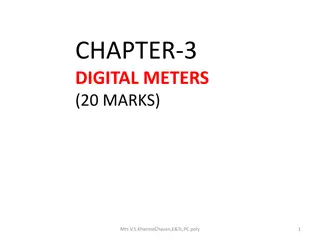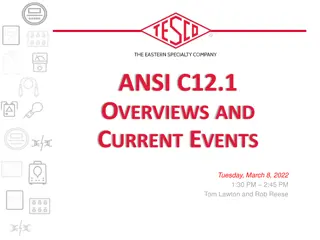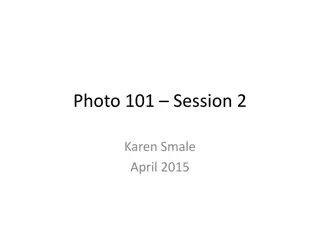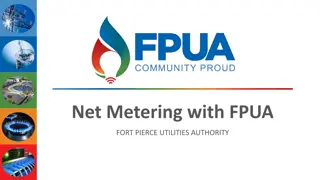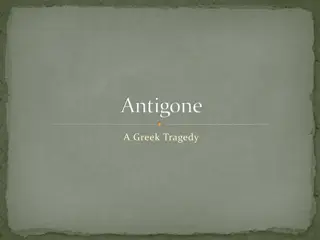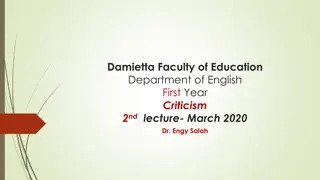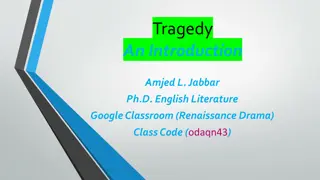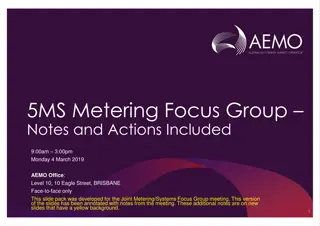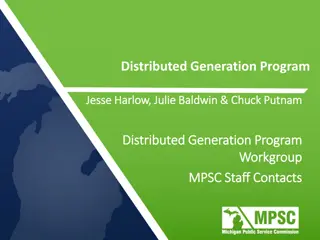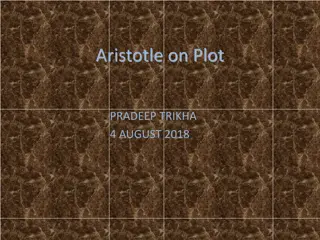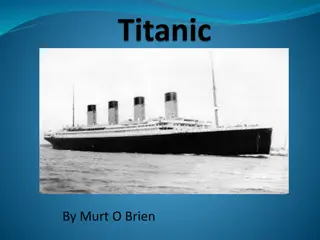The Tragedy of Smart Metering: Why Smart Meters Are Not Cost-Effective
The concept of smart meters is explored in-depth, highlighting the reasons behind the push for their adoption and the challenges they pose in terms of cost-effectiveness. Issues such as automated billing and decision-making processes within the industry are scrutinized, shedding light on the true motivations behind the implementation of smart meters.
Download Presentation

Please find below an Image/Link to download the presentation.
The content on the website is provided AS IS for your information and personal use only. It may not be sold, licensed, or shared on other websites without obtaining consent from the author.If you encounter any issues during the download, it is possible that the publisher has removed the file from their server.
You are allowed to download the files provided on this website for personal or commercial use, subject to the condition that they are used lawfully. All files are the property of their respective owners.
The content on the website is provided AS IS for your information and personal use only. It may not be sold, licensed, or shared on other websites without obtaining consent from the author.
E N D
Presentation Transcript
The Tragedy of Smart Metering Nick Hunn
Why do we need Smart Meters? Because they will save money for utilities? Because they ll reduce the cost of energy bills? Because they will make disconnects easier? Because meter manufacturers want to reduce the replacement cycle? Because we re all going to buy electric vehicles? Because they ll help manage demand through Time-of-Use tariffs? Because they ll prepare us for a distributed grid? Because they ll solve the generation shortfall in 2017? Because the Government needs an IT disaster in 2017 to distract attention from the generation shortfall? Because it s the next step towards a Big Brother state? To meet the European 20-20 Mandate?
Because DECC thought Smart Meters could save the world?
The European 20-20-20 Directive The directive encourages the introduction of smart metering where economically reasonable and cost effective . Despite the wording, it is regularly cited as a binding mandate.
The Problem As a means of automated billing smart meters are not cost effective. If they were, utilities would have already installed them. Various assessments by DECC consultants repeated that verdict. That gave DECC a problem: They could tell ministers to change policy, or They could try to find other benefits. They chose the latter.
Another underlying problem Almost every DECC decision is based on their vision of how the world should be, not how it is.
Its a classic case of Policy leading Evidence, not Evidence leading Policy.
So they made up some savings. 4.6bn 3.2bn 2.1bn 1.1bn 0.8bn Savings from consumer behaviour change Reduced site visits to read meters Reduced need for customer support Associated carbon savings Generation and Grid efficiency benefits
Consumer Engagement Utilities don t have a good history of consumer engagement.
If you can see it, you wont use it. So DECC decided to give everyone an In Home Display.
But wheres the evidence? Annual Decrease 3 Month Wonder DECC Projection Appliance Change
Over the long term, savings revert Annual Decrease 3 Month Wonder DECC Projection Appliance Change
Bad evidence. Worse consequences. To affect domestic savings DECC decided to give everyone an In Home Display. That required a wireless link to the electricity and gas meters. This all required a specification for product in the home.
The next big mistake In every other country with a deregulated industry, meters have been owned and fitted by the grid operators. They supply data from the meters to the current energy supplier. It means that meters don t need to be interoperable. In the UK, meters are fitted by energy suppliers, each of whom has a favourite supplier. To enable switching they need to be interoperable. It s also needs a central authority to read and forward the data the DCC. Interoperability carries a massive additional cost.
Choosing Technology. The choice for wireless technology in the home was made by non-technical people. The decision was largely based on PowerPoint and PR. The choice ZigBee was little used and known to have major faults, but its suppliers were desperate to win the programme. Once chosen, the utilities decided it didn t do enough. So despite having no expertise, they rewrote it. Four times. Meter vendors also wanted to keep their own standard, so they merged ZigBee with the old DLMS and COSEM metering standards. The result was the SMETS1 specification. GCHQ deemed it insecure, so it s been rewritten again to form the SMETS2 standard. It needs a massive GB companion specification.
Choosing more Technology. The choice for wide area connectivity was left open to companies bidding for the CSP contracts. Telefonica won two areas using GPRS (2G) Arqiva won the Northern area using a proprietary radio network. Allowing different options requires a separate comms hub, adding more cost and complexity. As the 2G network will probably be turned off by 2026, around 20 million comms hubs will need replacing between 2020 and 2026. Smart meters look like having a very short life.
Complexity adds delays 2012 2013 2014 2015
Complexity adds delays Projected number of smart meters (millions) Years into deployment
The inevitable consequence Number of meters to be installed 60,000,000 50,000,000 40,000,000 30,000,000 20,000,000 10,000,000 2020
The Alleged Grid Benefit and the folly of tariffs.
In the beginning there was Economy 7 Simple Time of Use (ToU) Tariff Price / kWh 20p Day Rate 10p Night Rate 4:00 0:00 8:00 12:00 16:00 20:00 0:00
Then we had Critical Peak Pricing Peak Time of Use (ToU) Tariff Price / kWh 30p Peak Rate 18p Shoulder Rate 10p Low Rate 4:00 0:00 8:00 12:00 16:00 20:00 0:00
Mitigated by Eat All U Like weekends Peak Time of Use & Weekend Tariff Price / kWh 30p 18p 10p 4p Weekend Rate Sun Mon Tue Wed Thu Fri Sat
Next we have Rising Block Block Tariffs Monthly Usage 30p /kWh All usage above 300kWh 300 kWh Next 100kWh 20p /kWh 200 kWh First 200kWh each month 15p /kWh 0 kWh
Which hit you when its too late Monthly Cost 80 Monthly Cost Cumulative Energy Usage (kWh) 30 400 30p /kWh 50 300 20p /kWh 20 Energy Usage 30 200 15 15p /kWh 15 100 15 0 Week 1 Week 1 Week 2 Week 3 Week 4 Billing Period
Then they start showing off Tier 1 Tier 2 Tier 3 Block 3 Block 2 Block 1
To the point that consumers are lost 18p 24p 40p 14p 18p 30p 10p 15p 20p The current SMETS specification allows 8x8 matrices, which can be different on every day of the year. And the block levels can be different in each tier. Consumer engagement has been discarded in favour of technology.
Its not as if the UK has extreme weather 4 000 Texas electricity usage Texas electricity usage with air conditioning UK usage without heating 3 000 Power (W) 2 000 1 000
Security Smart meters could be hacked. The standards used have not been widely tested. Meters could contain malware. Remote software upgrades could contain bugs. As meters contain a disconnect switch, if large numbers were turned off simultaneously it could cause major damage to the grid. Losing the power grid is possibly the biggest threat to a country, but no-one appears to be taking this seriously.
Questions? Nick Hunn CTO mob: +44 7768 890 148 email: nick@wifore.com web: www.wifore.com Smart Metering Articles: http://www.nickhunn.com/gb-smart-metering/ Creative Connectivity Blog: www.nickhunn.com LinkedIn: www.linkedin.com/in/nickhunn
